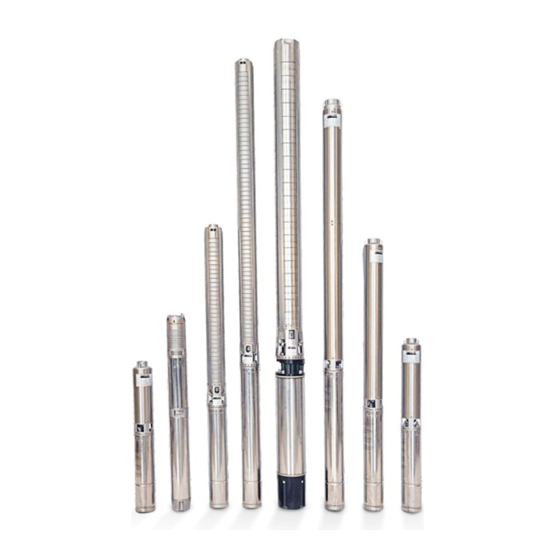DAYLIFF D3SP Руководство по установке и эксплуатации - Страница 10
Просмотреть онлайн или скачать pdf Руководство по установке и эксплуатации для Водяной насос DAYLIFF D3SP. DAYLIFF D3SP 16 страниц. Submersible borehole pumps

Fit the first starter pipe into the pump outlet and ensure a tight leak free joint
Ÿ
while the pump is on the surface. The thread on the starter pipe should not be
longer than the threads in the pump outlet or it will interfere with operation of the
non-return valve.
Screw the starter pipe into a robust adaptor hook attached to the winch or tripod
Ÿ
cable and lower the pump and pipe section into the borehole. When fully
lowered hold the pipe below the socket with a clamp, disconnect the lifting hook
and attach to the next pipe length ensuring a water tight connection. Ensure the
pipe joint is fully home and repeat until all pipes are lowered.
While the pipes are being lowered bind the drop cable, low level cable (if fitted),
Ÿ
and airline (if fitted) to the drop pipes with a PVC cable clip at 2m centres.
6. PUMP OPERATION
When the pump has been connected correctly and is submerged in water proceed as
follows:-
First check the direction of rotation by starting the pump and observing a normal
Ÿ
water flow. If low or uneven change the direction of rotation by switching two
phase connections.
The pump should then be run with the discharge valve restricted to
Ÿ
approximately 1/3 of its maximum volume of water. Observe if there are
impurities in the water and then gradually open the valve until the water is
observed to be clear. If the water continues to be silted the pump is installed too
low in the borehole and it should be raised until it is in a position of clear water
availability. Alternatively a borehole problem is indicated and a driller should be
consulted.
As the valve is being opened, the water output should be monitored to ensure
Ÿ
that the pump output does not exceed the borehole capacity as indicated by the
pump starting and stopping on the low level relay (if fitted) or uneven water flow
at the outlet. If this occurs the pump should either be changed to one of suitable
specification or throttled on the outlet valve to a sustainable output. Note that
the dynamic water level should always be above the suction interconnector of
the pump.
After the water flow settles the pump overload relay should be set. This is carried
Ÿ
out by reducing the overload setting to the cutout condition and then increasing
by +10%.
During regular operation the pump operating current should be regularly
Ÿ
monitored and if a substantial change is noted (±10%) it should be investigated
by a service technician. Pump output should also be monitored and if the flow
rate or consistency changes investigations should be made.
8
